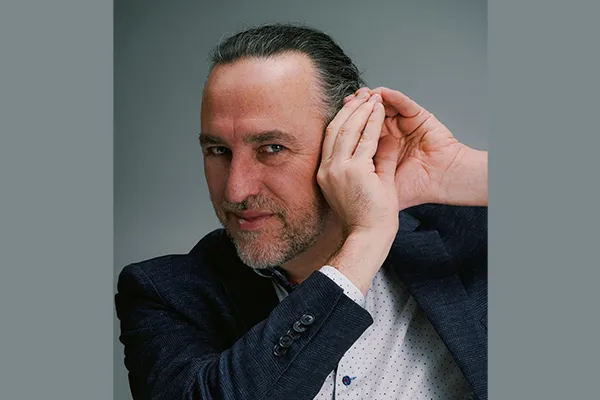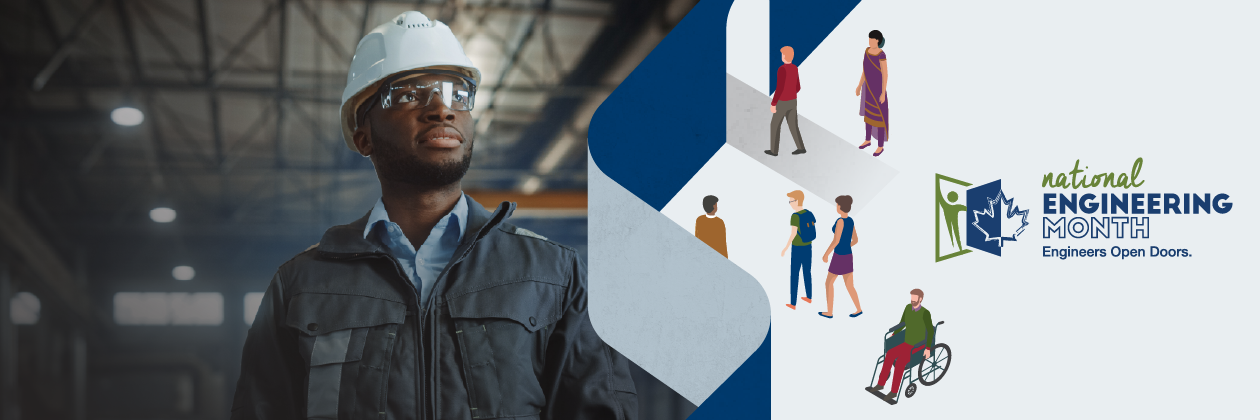
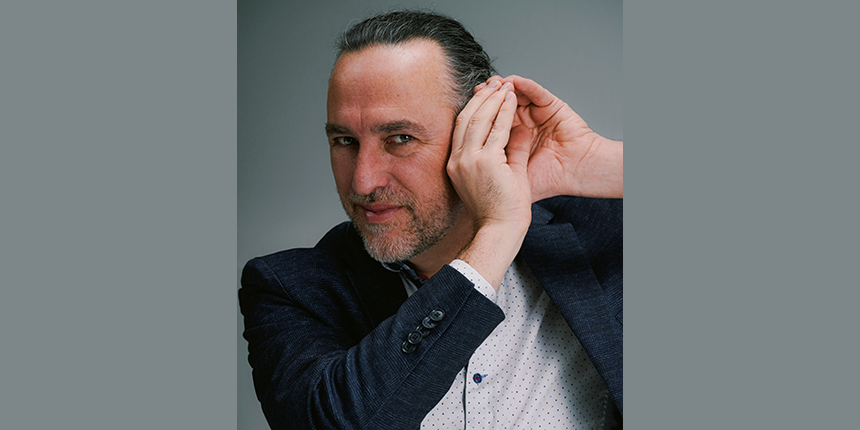
As a small child, Anthony Gérard, PhD, ing., was afraid of loud sounds—“fireworks, motorbikes, everything noisy”—and would cling to his mother in terror. Today, he is Director of Acoustics and Vibrations at Soft dB, a firm that specializes in solving noise and vibration problems for clients around the world. His journey has taken him from his native France to Quebec, from academia to private industry, and from music to engineering.
As Gérard grew older, he was fascinated by physics and mathematics, and aspired to become a researcher. At the same time, he was drawn to music, taking up both trumpet and singing.
“So at 18 years old, I had to make a choice in my life. Do I become a musician or a researcher? And I said okay, I can do research and engineering and do trumpet and singing on the side, but I cannot do the opposite.”
Engineering opened the door for him to build a career out of his passion for both sound and research by diving into the field of acoustics.
Acoustics: The engineering of sound
His choice made, Gérard completed his bachelor of engineering in France with a heavy focus on acoustics, which he calls “the engineering of sound”, a natural choice for someone musically inclined. He then made a big life change, heading to the Université de Sherbrooke, in Quebec, to complete his master’s degree.
“I liked the program there a lot: I had courses in mechanical engineering for the science of acoustics, and then electrical engineering for artificial intelligence.”
At that time, the field of artificial intelligence (AI) was nascent, but Gérard was very interested. During his master’s, he took one of the earliest AI and acoustics courses offered in Quebec, and built a computer program that employed AI to cancel out sound by controlling the vibrations created by non-linear systems, where traditional algorithms don’t work. This achievement made him a pioneer in the application of AI to acoustics.
Gérard says he fully intended for his education to be complete after his master’s degree, but fate intervened.
“I invented something, almost by accident. My master’s thesis was about noise reduction from fans and, as I was a musician, I wanted to create a musical instrument based on fans, and using equations I found that there is one aerodynamic shape that can create a lot of noise.”
He experimented with using a pipe and a fan to adjust the frequency of the noise, but found that at certain locations of the aerodynamic shape he introduced, the instrument actually cancelled out the sound being generated.
“It was a dynamic interferometer that can create noise or control it. So for the industry, it was much more interesting to reduce noise than to create noise. I patented that, and it was my PhD thesis.”
After completing his doctorate, he travelled around Africa and South Asia, recording children’s songs and working on other musical projects for several years before returning to the University of Sherbrooke as a research chair.
But he was quickly lured away, for a good reason: his wife wanted to move to Montreal, and Gérard wanted to see her more than just on weekends.
Luckily, a friend was vice-president at a company called Soft dB and invited Anthony to come and work for them in Montreal. Although he was initially reluctant, his friend suggested the company might be able to do something with one or more of the patents Gérard held. He agreed to come on board for one day a week. A year later, he was working at Soft dB full-time as a project manager.
Applying AI to the acoustics of mining to benefit the project and the community
One of his first assignments was the Canadian Malartic open-pit gold mine in Abitibi, Quebec, a job that presented some difficult challenges, to say the least.
“Imagine you have a huge mine, just next to a town. And it’s open.”
Soft dB’s challenge was to help the mine control and manage the noise it generates to comply with legal limits. Gérard and his team developed specialized monitoring software and acoustic radar imaging to identify, in real time, the main sources of noise on the site. Rather than shutting down all activity and then restarting piece by piece, this software allowed the mine to keep operating and simply adjust equipment or shut down individual machines while remaining compliant.
The Soft dB team also pioneered the use of AI to identify and filter out sounds picked up by acoustic radar that were not generated by the Malartic site.
“The radar is 95 per cent accurate—except when there is a source of sound not coming from the mine between the radar and the mine. Birds, for example, dogs, or cars,” says Gérard. “Previously, we filtered by hearing the audio waves. It's a long process and it cannot be done in real time. So what we wanted to have was a real-time indicator.”
They converted the sounds into spectrograms and trained a neural network to analyze those images and recognize the types of sounds they represented. Gérard says this AI pre-filtering algorithm scores among the best in the world for recognition of events and sound character learning. He adds that when the acoustic radar is combined with this AI filter, the entire system’s ability to identify sounds is better than a human’s.
He's careful to add that AI is only a small component of the larger noise-monitoring system: “AI is like the cherry on the sundae. It's not the base of everything.”
Gérard and the Soft dB team have helped Malartic stay compliant with noise regulations for many years. That’s important on several levels, he says. Naturally, it’s financially advantageous for the company if they can continue to operate without shutdowns or incurring fines, but it’s also a huge benefit for the people living nearby.
“If you want to operate and have a good relationship with your neighbors, you have to respect the laws. So, in fact, we are helping the relationship with the community, between the mine and the neighbourhood, which is very important for the social acceptance of the project.”
AI in engineering practice
Although AI has contributed to the success of the Malartic project and similar mining projects elsewhere, in general, Gérard says engineers should maintain a healthy skepticism about the technology.
“Because you cannot trust the answers of artificial intelligence in engineering practice. You must check what the AI says, because if you ask the same question two times, you will have two different answers—sometimes one right, the other wrong, sometimes both wrong, sometimes both right.”
He adds that large language models such as ChatGPT can be useful for sparking out-of-the-box ideas, but those ideas should always be researched using trusted sources of information and data.
Looking back, Gérard notes that when he initially considered working with Soft dB, he had some ethical concerns, but his wife set him straight.
“I didn't sign up to be an acoustician for mines or industry; I was a researcher. Do I promote noisy clients or operations? And my wife is an environmental engineer. She told me, ‘No, no, no, no. You are here to help them to be compliant and to help the community and if you don't do it for them, what? Somebody else will do it, maybe? Maybe not as well as we can do with Soft dB.’ So I said, you're right. OK, so let's go on.”
All of the skills Gérard developed during his time as an engineering student, and then as a researcher opened the right doors to help him solve the complex noise and sound problems posed by Malartic and other mining operations in Canada. His decision to move to private industry was ultimately the right one, and he’s very happy where he ended up (even though none of the patents he brought with him ended up being used by Soft dB).
“So, in the end, my friend was right. I love to convert real problems from my clients into challenges for engineers and turn them into intelligible solutions for clients.”
More in this series
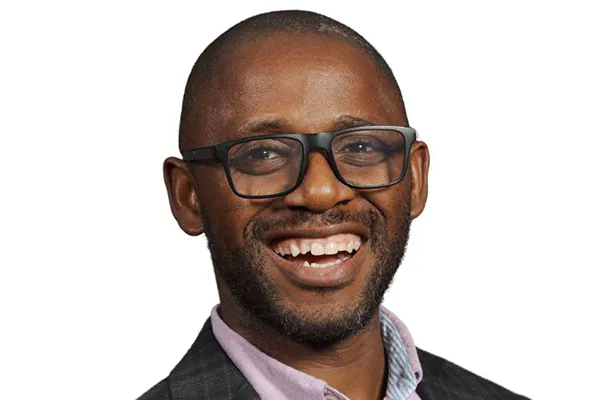
Ayo Daniel Abiola believes more sustainable buildings are possible and essential
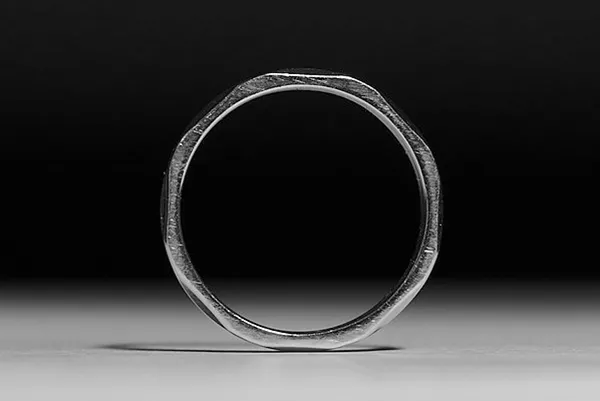
100 years of the iron ring: A symbol of an engineer’s commitment
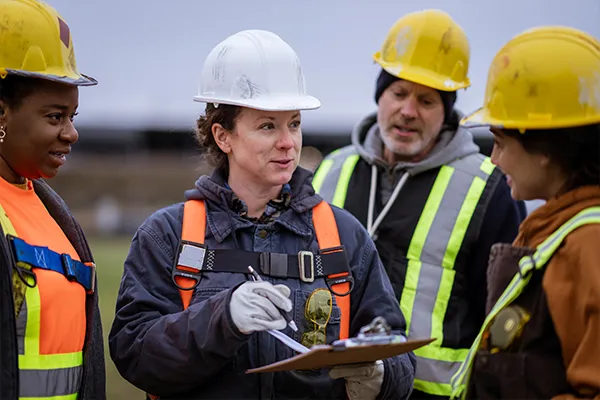
From the symbolism of the iron ring to engineering licensure: Enshrining ethics in engineering
